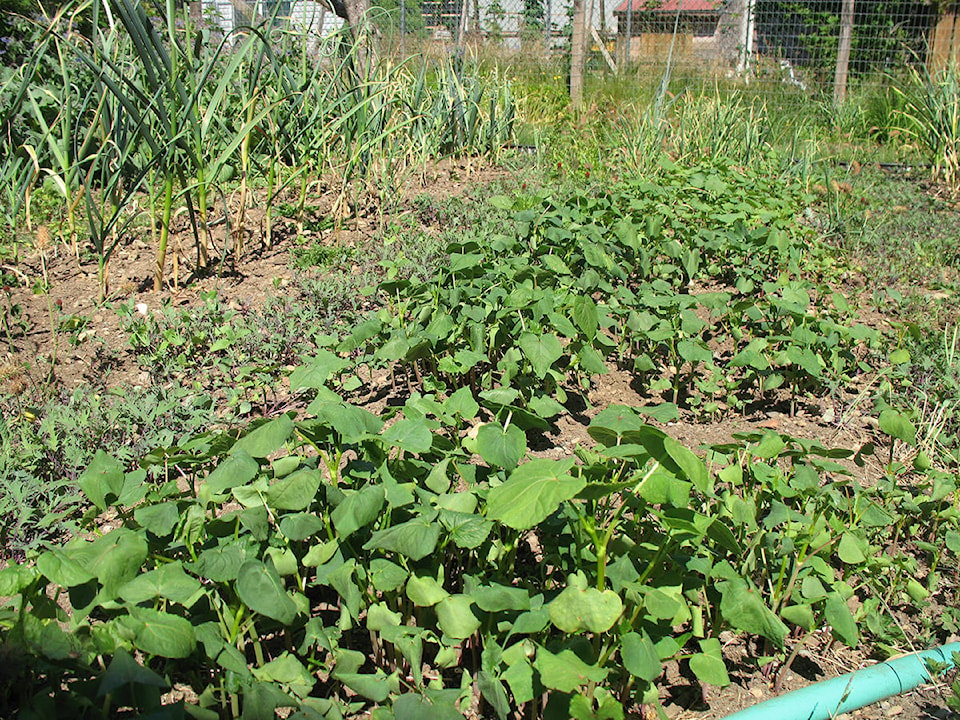By Mary Lowther
David and I are going away for the summer, leaving the garden and our cat in the capable hands of some friends. This is a great opportunity to let the garden rest and let it go fallow, which is a farmer’s term for not growing vegetables this year and either putting in a cover crop or nothing and letting it sit.
Fallows allow the land to recover from diseases or infestations they may harbour from previous years, so I’m going to use this as an excuse when we abandon my erstwhile lovely garden. I’ll pretend I’m doing it on purpose.
Every season I keep one or two beds in fallow, covered with plants designed to help clean them of disease or pests and return nutrients to the soil when they’re finished, but this year, most of the garden will rest. I sowed alfalfa, buckwheat, fava beans and kale seeds in most of the beds and left a few beds of veggies for the visitors to harvest.
Alfalfa contains a lot of protein and will augment the compost heap in the fall. Buckwheat grows well in the summer and is rather a tender plant so it breaks down well in the compost heap. Though kale is a member of the brassicas, most of which become riddled with club root, the kale I’ve grown never suffers from this affliction and works very well as a cover crop, particularly since I let some go to seed last year and now have tons of the stuff. I also have tons of Brussels sprouts but won’t be using them since they do develop club root in my soil.
By the way, I can still grow great brassicas even with club root present in the soil. I start them in sterile potting soil, re-pot them until they’re about four to six inches tall, grow them as quickly as possible in the garden and they develop well before club root takes over.
The fallow beds won’t be watered so it will be interesting to see how they fare. My garlic bed also won’t be watered and, given that garlic usually comes out in mid-July, I’m interested to see how they turn out when left in till September. Chives, garlic and kale must send down impressive roots because they thrive without water, or with very little anyway.
The asparagus, fruit and a few veggie beds are set up with soaker hoses and timers and I’m keeping my fingers crossed that everything works. We’ve gone away for two weeks at a time while the garden lived on, but never for two months.
I’ll be writing this column on the road as I hope to visit some farms across Canada and see what they’re up to. Apparently Saskatchewan is rife with organic farmers. Manitoba boasts three experimental greenhouses modeled after the latest Chinese style. We’ll see how far our ’84 Chevy motor home will take us in a month and then come back.
Please contact mary_lowther@yahoo.ca with questions and suggestions since I need all the help I can get.
